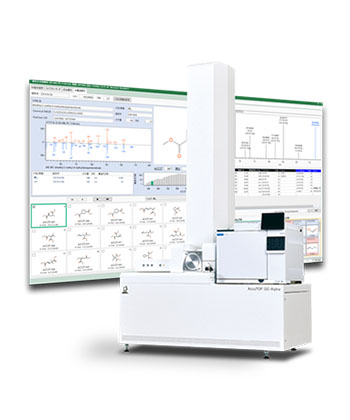msFineAnalysis iQ integrated qualitative analysis software Model:msFineAnalysis iQ
You no longer have to only rely on library DB searches for qualitative analysis! msFineAnalysis iQ
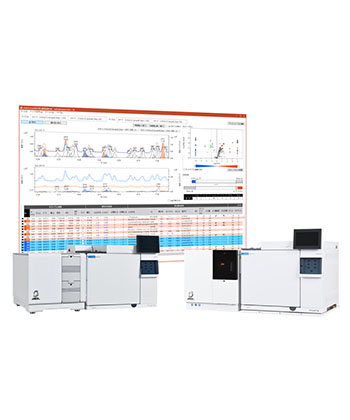
-
The msFineAnalysis iQ is an automatic qualitative analysis software that enables "integrated analysis" by combining the library database (DB) search using EI data and molecular weight confirmation using soft ionization data.Usefulness of integrated qualitative analysis
In qualitative analysis by GC-MS, it is common to perform a library DB search using mass spectra obtained by the Electron Ionization (EI) method.Full Functionality of the msFineAnalysis Series
The following figures and table show the EI and Soft Ionization (SI) mass spectra of component A, and the results of the library DB search using the EI mass spectrum. The library DB search results show that all of the candidates have a high similarity score of more than 800. In most cases, component A will be determined to be the first candidate with the highest similarity score in the library DB search when qualitative analysis is performed using only the EI mass spectrum. However, m/z 314, which is presumed to be a molecular ion, has been detected in the SI mass spectrum. Therefore, component A can be presumed to be the second candidate "Diethylene glycol dibenzoate".
In JEOL Ltd., we call the combination of library DB search using EI mass spectrum and analysis of molecular ions in the SI mass spectrum as "integrated qualitative analysis".
The msFineAnalysis iQ is a software that can perform this integrated qualitative analysis automatically.
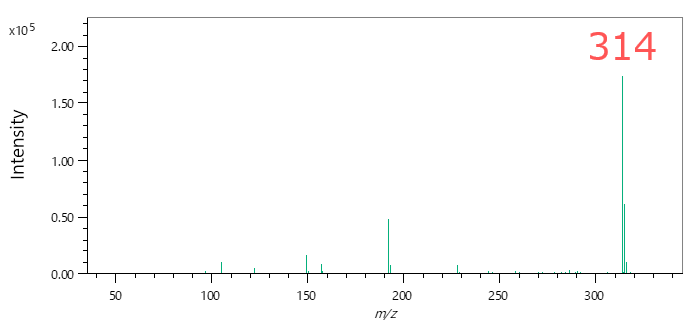
EI mass spectrum of component A SI mass spectrum of component A No. Library Name Similarity Formula MW 1 2,2'-(Ethane-1,2-diylbis(oxy))bis(ethane-2,1-diyl) dibenzoate 828 C20 H22 O6 358 2 Diethylene glycol dibenzoate 821 C18 H18 O5 314 3 Benzoic acid, 2-(3-nitrophenyl)ethyl ester 810 C15 H13 N O4 271 4 1,3-Dioxolane, 2-(methoxymethyl)-2-phenyl- 802 C11 H14 O3 194 5 3,6,9,12-Tetraoxatetradecane-1,14-diyl dibenzoate 800 C24 H30 O8 446
GC-MS qualitative analysis solution
Problems for Conventional Qualitative Analysis

- Library DB search results produce multiple similar candidates, not a single candidate.
- Unregistered compounds cannot be identified by library DB search.
- More sophisticated analyses take time.

- Quickly narrows down candidates by integrated analysis by combining EI data and soft ionization (SI) data.
- After the data is selected, only a single-click is required to generate the automatic integrated report.
Integrated Analysis Result WindowIn the Integrated Analysis Result window, the user confirms the results for the integrated analysis. This window shows the EI and soft ionization (SI) chromatograms, chromatogram information, spectrum information, library DB search, and molecular ion analysis results. When the user double-clicks the desired line in the analysis result list, a separate mass spectrum analysis window appears that allows the user to confirm the search result and molecular ion analysis result. The user can also update the results or perform the analysis again.

Two Sample Comparison Function (Differential Analysis)The two sample comparison function uses reproducibility of the p-value on the vertical axis and a volcano plot which indicates the intensity ratio between two samples on the horizontal axis. This information enables a visual confirmation of the differing components between two samples. For example, it is possible to confirm the component that increases or decreases by comparing the reference product and defective product, or to confirm the components that are characteristic in a new material by comparing it with an existing material.
After differential analysis between samples, the normal msFineAnalysis integrated analysis is performed for all components.
For a two sample comparison function, it is possible to set n=1, 3, 5, for the number of measurements for each sample. In the case of n=1, it is not possible to evaluate the statistical reproducibility. However, it is possible to confirm which components are different. This function allows the user to do sample comparisons even when it is not possible to acquire more than one measurement for each sample.
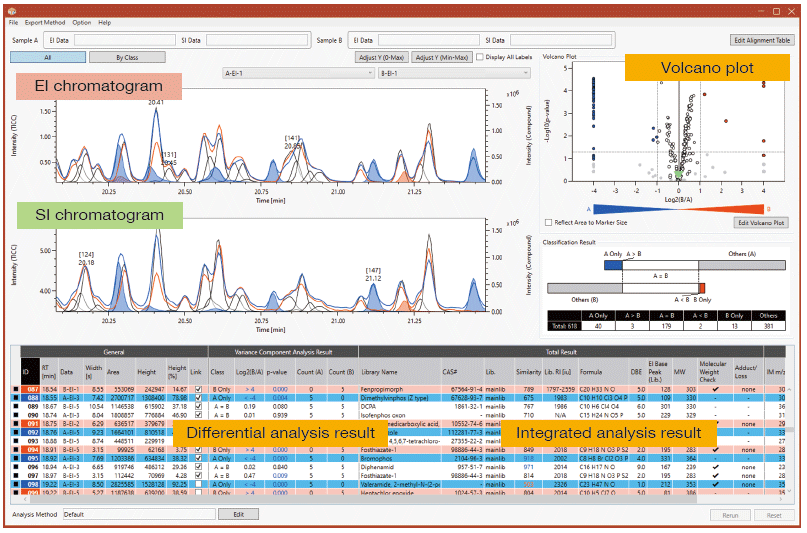
Deconvolution Detection
Deconvolution detection can detect trace components that may not be obvious in the TICC as a result of several component peaks overlapping and/or coelute as a single peak.
As a result, it is not necessary to create an extracted ion chromatogram (EIC) one-by-one manually, as was previously necessary.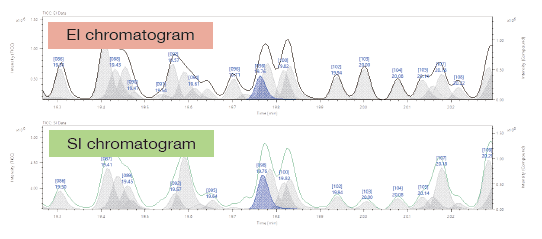
EI: black solid line: TICC, gray peaks: deconvolution peak
SI: green solid line: TICC, gray peaks: deconvolution peakAnalysis by EI Data Alone
Analysis using EI data alone is also possible.
When soft ionization sample data is not available, msFineAnalysis can produce an integrated analysis report in which the EI data is used for both the library DB search and the molecular ion search.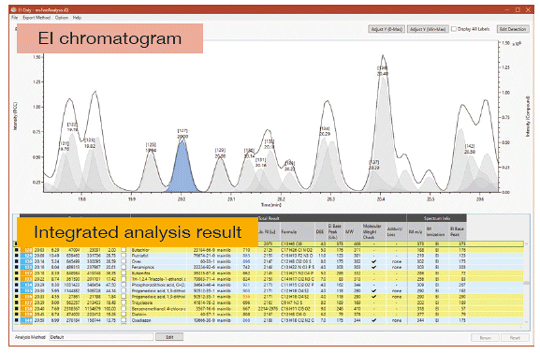
Retention Index Qualitative Analysis
Retention index (RI) is a relative index value based on the retention time (RT) of an n-alkane standard mixture. This qualitative analysis function is performed by converting the retention time of the target component into a retention index and then comparing it with the retention index value in the database, etc.
With the msFineAnalysis series, it is possible to narrow down the qualitative analysis result further by using the retention index.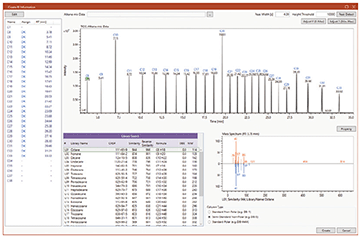
Retention index creation screen: GC/EI data of n-alkane mixture






